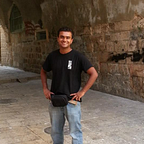The Power of Trade: A Bridge Toward Global Peace
I’ve always been fascinated with the journey of goods around the world. Perhaps it’s my family background that has fueled this fascination — though I was raised in small town in Arizona, my parents are from southern India and immigrated to the U.S. when I was very young.
Economist and Nobel laureate Milton Friedman encapsulated the brilliance of international trade and global economics in a simple anecdote about a pencil. In the production and trade of a single pencil, thousands of people and materials from all corners of the world come together — wood from Brazil, rubber from Indonesia, metal from China, paint from Mexico, and graphite from Norway — making it possible for us to walk down to the corner store and buy a pencil for a small sum.
Trade teaches us a great deal about human values, culture, and history.
As an agricultural trade policy intern at the EU Delegation in Washington, D.C., I have learned about the impact of geographical indicators on trade, dug deep into trade statistics, participated in interesting discussions with various EU or U.S. industry associations, and tracked policy and legislative developments by attending Congressional hearings and think-tank events. I have long wanted to work on trade between the EU and the U.S. because the EU-U.S. trade relationship is the single largest in the world.
Diving deep into trade statistics has perhaps been the most enjoyable work I have done at the Delegation. Both governments keep exceptional track of trade statistics; collecting and analyzing this data has allowed me to discover interesting trends across Member States and U.S. states — a reflection of the large diversity in culture and values on both sides of the Atlantic. Take alcoholic beverages, for example. If you search Eurostat’s trade databases for common categories of alcohol (i.e. wine, beer, spirits), you will learn that there are distinct alcohol belts across Europe, with wine produced across southern Europe, beer produced across central Europe, and spirits (primarily Vodka) produced in northern and northeastern Europe.
Shaped by historical climate and soil patterns, these alcoholic beverage production trends have, over time, become inextricably tied to the diets, cultures, and even symbols of many producer countries.
The deep historical, cultural, commercial, and legal explanations hidden in trade data reveal much about the intricate dynamics of world trade and the interaction of societies.
It’s been quite an amazing experience to work in a building full of people from across the European Union, as well as with several fellow Americans. Walking down the hallway, I hear a dozen different languages and enjoy learning about everyone’s cultures and worldviews. Yet, despite such cultural differences, my colleagues are palpably committed to a common mission and take pride in the meaningfulness of their work. As a Baha’i, my faith cherishes above all else the unity of humankind across divisions of race, ethnicity, culture, religion, politics, and nationality.
Despite its flaws, trade can be an incredible platform for intercultural connection and a powerful bridge toward global peace.
Although I have interned for various U.S. trade-related agencies in the past, my internship at the EU Delegation has offered a unique insight on U.S. trade policy from a foreign government’s perspective — and I have had an absolute blast. Not only have I learned a great deal about international trade policy and administration, I have made some terrific friends too. I am happy that in my future trade career in Washington, D.C., the EU Delegation will only be a metro ride away.
Written by Sharath Patil, Spring 2017 Agriculture Trade Policy Intern in the Trade Section at the European Union Delegation to the United States and second year law student at the University of Oregon School of Law.
